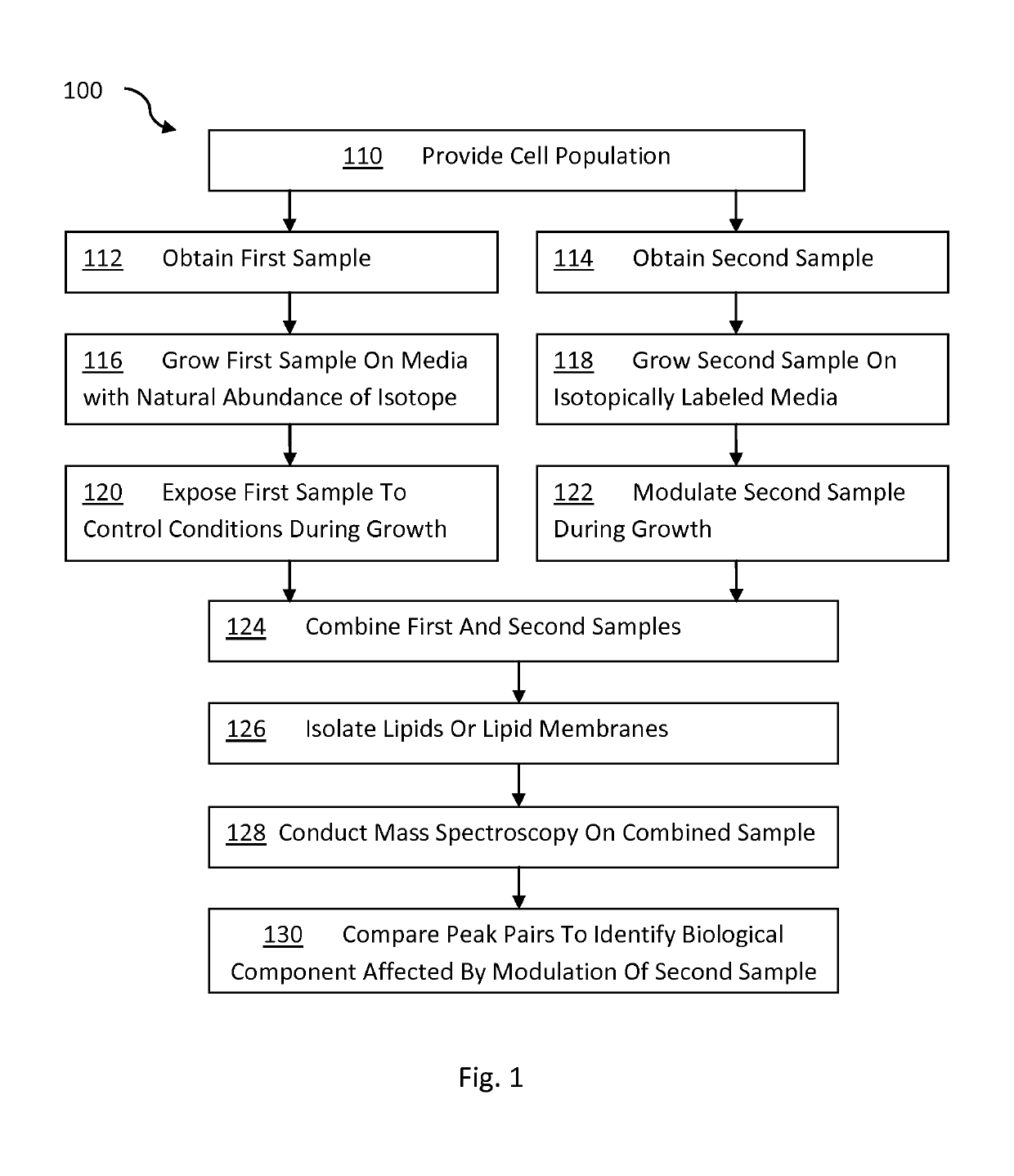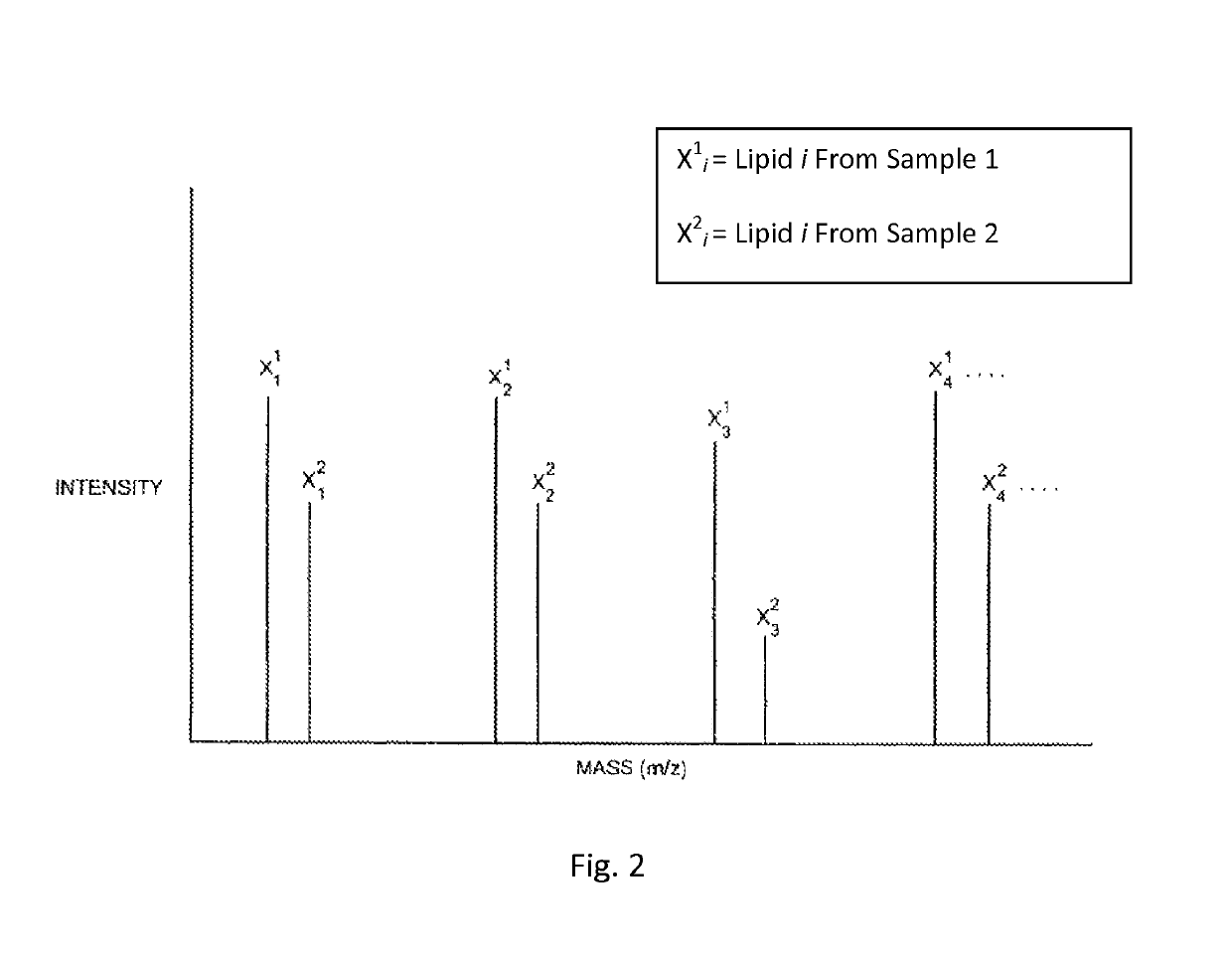Methods for analyzing lipids and membrane proteins in biological matter using stable isotopes and mass spectrometry
a technology of lipids and membrane proteins, applied in the field of analyzing lipids in biological matter, can solve the problems of agglomeration, denaturation, and/or deactivation of membrane proteins, and achieve the effect of accurately comparing the levels of ionizable lipids
- Summary
- Abstract
- Description
- Claims
- Application Information
AI Technical Summary
Benefits of technology
Problems solved by technology
Method used
Image
Examples
Embodiment Construction
[0087]A. Stable Isotope Labeled Proteins
[0088]In one embodiment of the invention, the methods using stable isotope labeled lipids in cell culture described above can be carried out in combination with a method using stable isotope labeled amino acids in cell culture in which cell modulation affects the expression of one or more proteins in a cell and the change in expression is observed using isotopically labeled amino acids and mass spectrometry. In this embodiment the isotope used in the media is typically a labeled amino acid such as, but not limited to labeled lysine and / or argenine. Examples of methods and techniques that can utilize stable isotope labeled lipids in cell culture are described in U.S. Pat. Nos. 6,391,649 and 6,653,076 to Chait and Franza, respectively, and an article authored by M. Mann, entitled “Is Proteomics the New Genomics?,” published in Cell, Volume 130, Issue 3, Pages 395-398, all of which are hereby incorporated herein by reference.
[0089]B. Detecting Bi...
PUM
 Login to View More
Login to View More Abstract
Description
Claims
Application Information
 Login to View More
Login to View More - R&D
- Intellectual Property
- Life Sciences
- Materials
- Tech Scout
- Unparalleled Data Quality
- Higher Quality Content
- 60% Fewer Hallucinations
Browse by: Latest US Patents, China's latest patents, Technical Efficacy Thesaurus, Application Domain, Technology Topic, Popular Technical Reports.
© 2025 PatSnap. All rights reserved.Legal|Privacy policy|Modern Slavery Act Transparency Statement|Sitemap|About US| Contact US: help@patsnap.com


